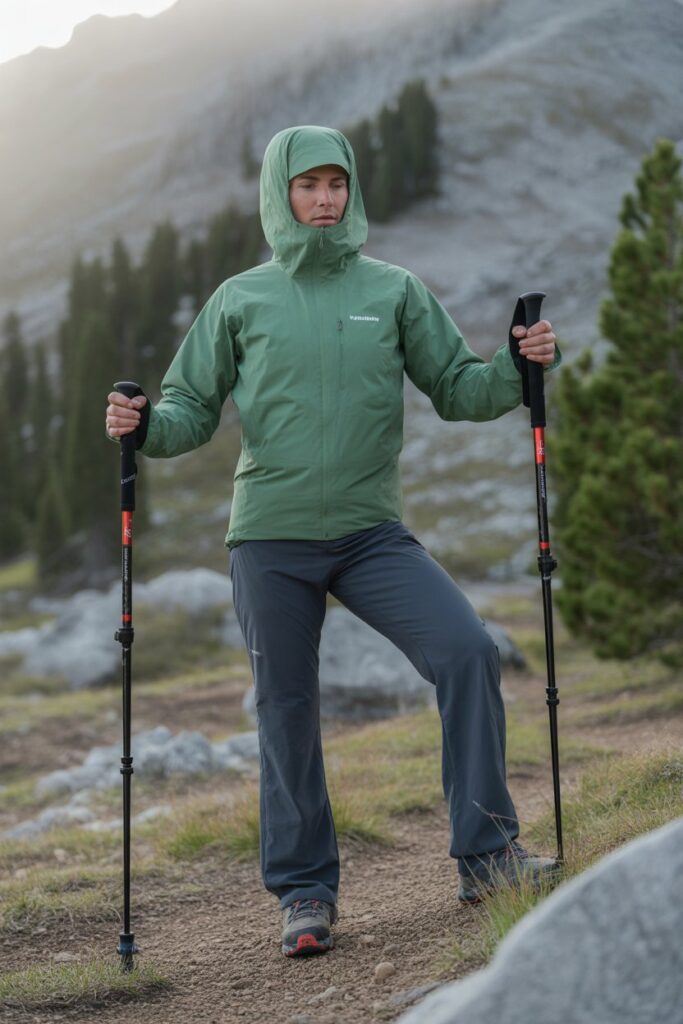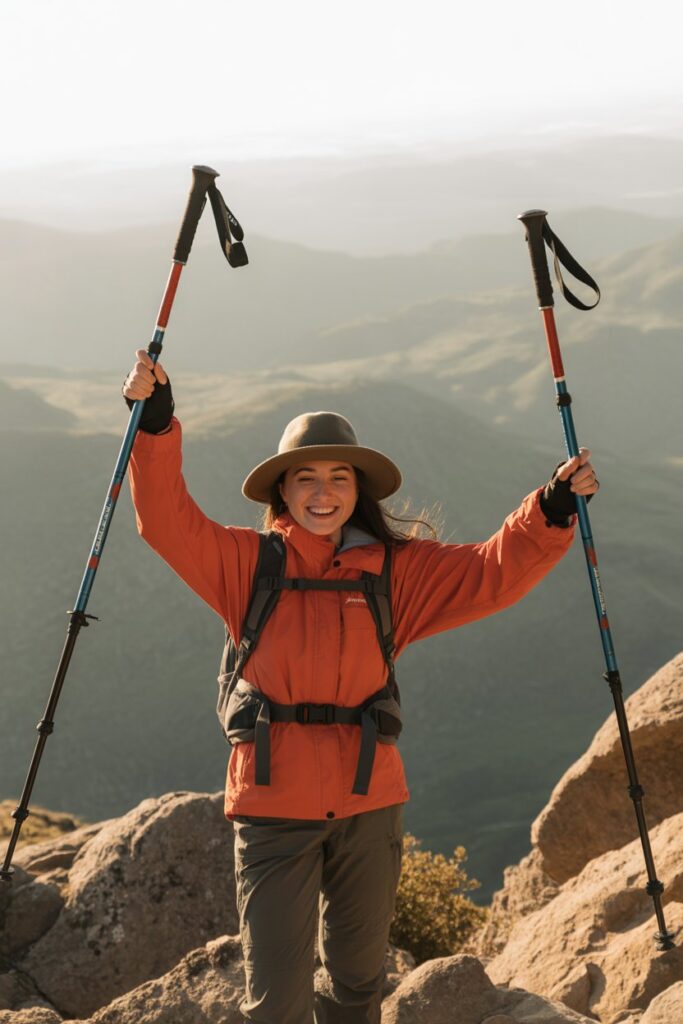- Why trekking poles are worth your attention
- How to actually choose your trekking poles
- Hiking poles vs. trekking poles – is there really a difference?
- Folding or telescoping – which one should you choose?
- Cheap vs. expensive trekking poles
- Trekking pole height – don’t skip this step
- Quick checklist before buying
- Your next step
If you’ve ever found yourself standing in the trekking poles section of an outdoor store, feeling like you just stepped into a foreign language class you never signed up for – carbon, cork grips, telescoping, folding – you’re not alone. You just wanted something that’ll make your hike easier, not a degree in hiking gear engineering.
Here’s the truth: the right trekking poles can completely change how your knees and legs feel after a day on the trail. Imagine walking downhill without that “why do my joints hate me” feeling. Yeah… it’s worth figuring out. And yes, even if you live in the city and only get out to the mountains once in a while, you’ll notice the difference on day one.
Why trekking poles are worth your attention
Let’s get one thing out of the way: trekking poles aren’t just for “serious hikers.” They’re for anyone who values stability, comfort, and arriving home from a hike without feeling like you’ve aged 10 years overnight.
Trekking poles give you better balance on uneven terrain. They take some of the weight off your knees when you’re going downhill and give you an extra push on uphill climbs. They’re like that friend who always helps you carry your grocery bags up three flights of stairs – you didn’t think you needed them until you did.

And yes, they even help on short, casual hikes. If your “weekend hike” is really more of a social walk in the local nature reserve, they’ll still keep you steady and confident – especially if the trail is muddy or a little icy.
How to actually choose your trekking poles
This is where a lot of people overcomplicate things. The store wall is covered in poles of different shapes, lengths, colors, and prices, and you feel like you’re choosing a soulmate rather than hiking gear.
Here’s the reality: there are three main choices you need to make, and once you do, you’ll know exactly what to buy.
Material: Carbon or aluminum.
- Carbon = super light, feels amazing in your hands, but it can snap if it takes a big hit (like getting wedged between two rocks).
- Aluminum = a bit heavier, but more forgiving and budget-friendly.
Adjustability: Folding or telescoping.
- Folding = compact, great for travel, fits inside a suitcase.
- Telescoping = quick to adjust, more common, and generally more durable for everyday hiking.
Grips: Cork, foam, or rubber.
- Cork molds to your hand and handles sweat beautifully.
- Foam is ultra-light and soft, perfect for warm weather.
- Rubber is durable and good for cold weather, but can be slippery in heat.
If you’re unsure, I’d say go for telescoping aluminum poles with cork grips. They’re a happy medium: comfortable, durable, and they won’t destroy your coffee budget for the month.
Hiking poles vs. trekking poles – is there really a difference?
Honestly? Not much. It’s a bit of marketing semantics. Both are designed for the same purpose: helping you walk more comfortably and safely on the trail. “Hiking poles” might sound more casual, and you’ll sometimes see them sold in lighter, simpler versions. “Trekking poles” are often marketed for rugged adventures and might have extra bells and whistles like interchangeable tips for snow, mud, or rocky ground.
Bottom line: if it’s comfortable, the right height, and the right price for you… call it whatever you want.
Folding or telescoping – which one should you choose?
If you do a lot of traveling or need to store your poles in a small apartment closet (hello, city life), folding poles are a dream. They pack down small and slip into a backpack without making you feel like you’re hauling ski gear on a summer hike.
Telescoping poles are better if you hike in a variety of terrains. You can quickly lengthen them for downhill sections and shorten them for steep climbs. They’re also easier to repair if something breaks.
Cheap vs. expensive trekking poles
You don’t need to take out a small loan for trekking poles, but there is a noticeable difference between budget and premium models. Higher-end poles tend to be lighter, have better locking systems, and come with grips that feel amazing even after hours on the trail.
Budget poles will get you from point A to point B just fine, especially if you hike occasionally. But if you’re planning a summer full of weekend adventures, investing in quality will pay off — in both comfort and longevity.
Trekking pole height – don’t skip this step
One of the easiest ways to ruin a hike is to use poles at the wrong height. On flat ground, your elbows should be bent at about 90 degrees. Shorten the poles for uphill climbs so you can push more effectively, and lengthen them for downhill sections so you can plant them firmly ahead of you for stability.

Get this right, and your shoulders, arms, and back will all feel better – and you’ll hike more efficiently without even realizing it.
Quick checklist before buying
- Will they fit in your luggage if you travel?
- Do the grips feel comfortable for your hands?
- Can you adjust them easily, even with gloves on?
- Are they within your budget, leaving enough left over for snacks and coffee?
Your next step
Choosing trekking poles is a bit like choosing hiking boots – once you find “the one,” you’ll wonder how you ever went without them. Think about where you’ll hike, how often you’ll use them, and what feels best in your hands. Borrow a friend’s set if you can, try them on different terrains, and listen to your body.
The right poles won’t just support you on the trail – they’ll make your hikes more enjoyable, keep you steadier, and let you focus on the views instead of your aching knees. So grab your new poles, head for that trailhead, and enjoy every step of the adventure ahead.

